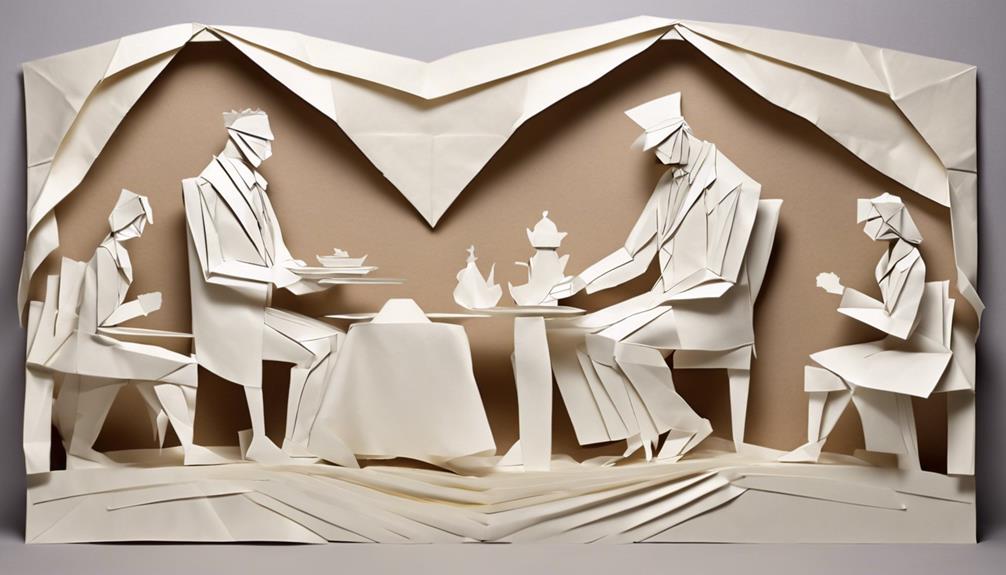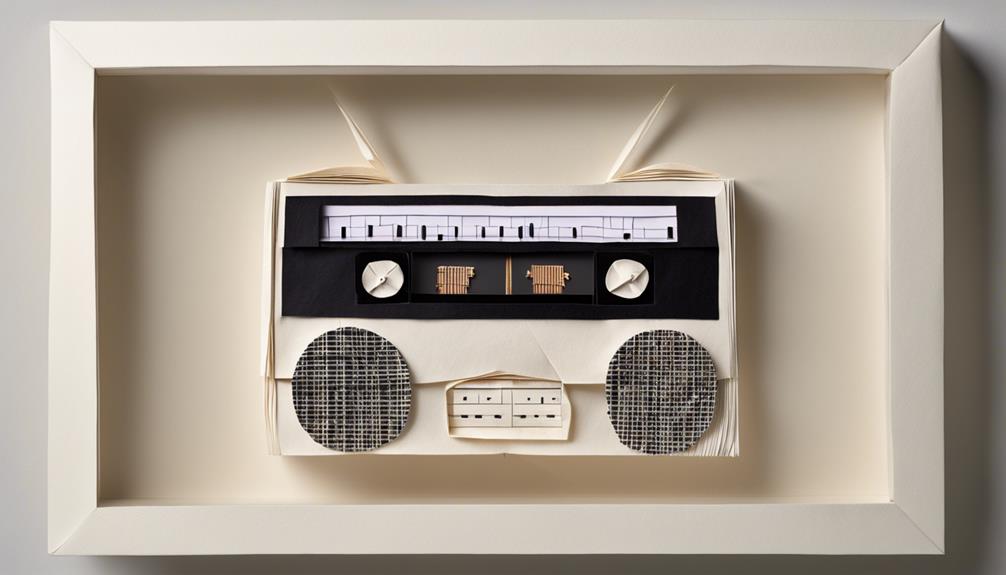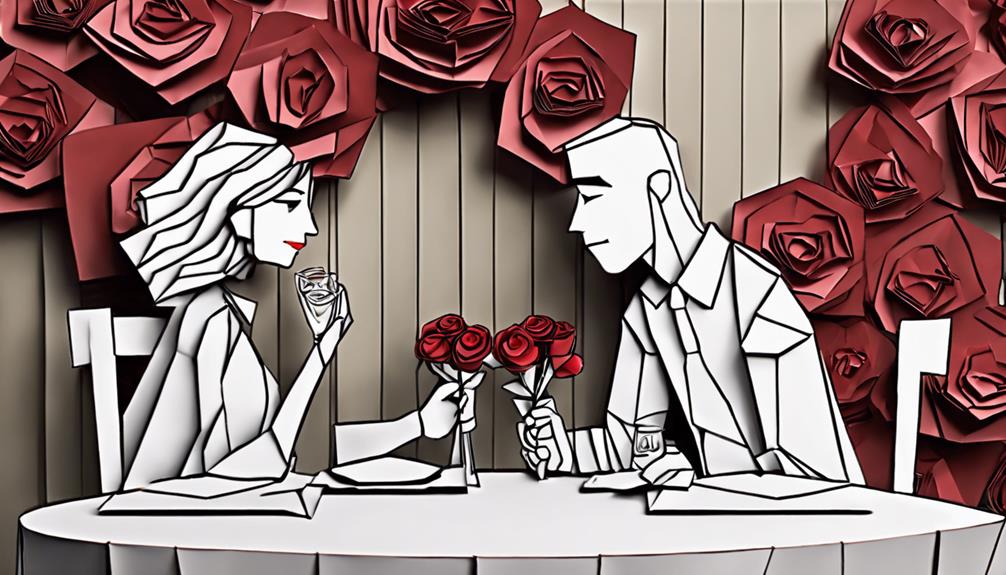The Royal Family abides by meticulous protocols, requiring approval for marriages, following dress code restrictions like mandatory hats and fur bans, and adhering to travel attire rules for somber occasions. Public behavior mandates minimal displays of affection and professionalism, with strict bans on autographs and selfies to uphold a controlled image. They enter rooms based on succession order, maintain gift acceptance records, and observe dining etiquettes meticulously, including ceasing eating when the Queen finishes. These rules, steeped in tradition and respect, shape the regal lives of the Royal Family members, demonstrating the blend of formality and heritage that defines their existence.
Key Takeaways
- Royals must seek monarch's approval for marriage up to the sixth in line.
- Mandatory wearing of hats for women at formal events.
- Nude pantyhose preferred for female royals.
- Ban on autographs and selfies to protect privacy.
- Dining etiquette includes stopping eating when Queen finishes.
Marriage Approval Required
Before tying the knot, members of the royal family, up to the first six in line to the throne, must seek the monarch's approval for their marriage. This essential protocol, mandated by the Succession to the Crown Act of 2013, guarantees that royal descendants must seek the monarch's approval for royal marriages.
This approval process isn't merely a formality but a significant step in maintaining the family's image and protecting the integrity of the lineage. Even notable figures like Prince William had to abide by this tradition, seeking the Queen's approval to marry Kate Middleton.
As the monarchy progresses, future monarchs like King Charles III will continue to hold the authority to either approve or deny marriage proposals from royal descendants. This longstanding practice underscores the importance of upholding tradition and protocol within the royal family, emphasizing the significance of the monarch's role in overseeing the marital unions of royal members.
Dress Code Restrictions

Additionally, it's worth noting that members of the royal family must strictly adhere to specific dress code restrictions, ensuring that their attire aligns with established protocols and traditions.
When it comes to formal events, hats are a non-negotiable accessory for women in the royal family, symbolizing the formality of the occasion.
Furthermore, wearing fur is a big no-no for most royals, following Queen Elizabeth's decision to ban new fur from royal attire in 2019.
For formal events, nude pantyhose are the preferred choice for female royals, adding a touch of elegance to their outfits.
Interestingly, even the way purses are carried is dictated by royal protocol, with female royals opting to carry them on the left arm to keep the right arm free for royal duties like waving and greeting.
Additionally, an intriguing tradition dictates that Myrtle must be included in royal wedding bouquets for good luck, a superstition that many royal brides have faithfully followed over the years.
Travel Attire Protocol
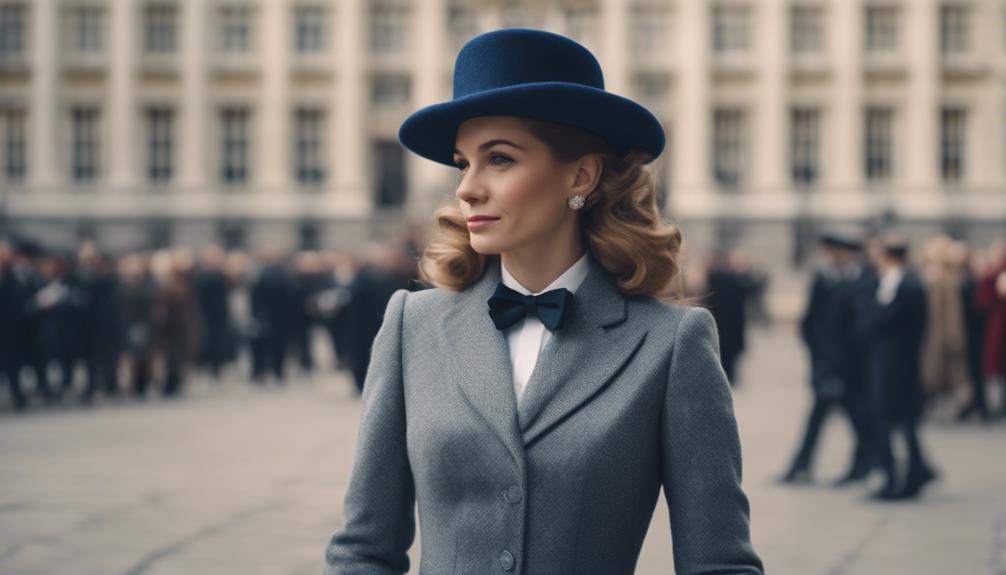
When it comes to traveling, members of the royal family follow strict protocols regarding their attire. From formal dress codes to hat etiquette and luggage restrictions, every detail is carefully considered.
These rules guarantee that royals are always prepared for any situation, whether it be a sudden formal engagement or the need to dress appropriately for somber events.
Formal Dress Code
In adherence to royal tradition, carrying an all-black outfit while traveling is mandatory for members of the royal family to be prepared for unexpected funerals. This formal dress code, part of the royal family's travel attire protocol, ensures that they're appropriately dressed for somber occasions even when away from home.
The all-black ensemble serves as a standard requirement to be ready for any unforeseen events that may necessitate mourning attire while on official trips. This strict dress code rule underscores the importance of always being prepared for formal events, even while traveling abroad.
Hat Etiquette
For royal family members, adhering to hat etiquette is an essential aspect of their travel attire protocol. This royal rule mandates that royals must be prepared to wear hats at formal events, emphasizing the significance of hat protocol in maintaining a polished and respectful appearance.
Additionally, hat etiquette extends to the requirement of carrying an all-black outfit while traveling to guarantee readiness for mourning attire during somber occasions such as funerals. This tradition underscores the royal family's commitment to always being prepared for unexpected events even when away from home.
Luggage Restrictions
To guarantee readiness for unforeseen events, royal family members abide by strict luggage restrictions as part of their travel attire protocol. When it comes to packing for official trips, the royal family must adhere to specific rules to make certain they're prepared for any situation that may arise.
One essential aspect of these luggage restrictions is the inclusion of an all-black outfit in their travel attire. This requirement serves a vital purpose, as it allows royals to have mourning attire readily available in case of unexpected somber occasions during their journeys.
By following this protocol, the royal family demonstrates their commitment to proper etiquette and respect for traditions even in their travel preparations.
- Royals must always pack an all-black outfit for mourning attire.
- The travel attire protocol ensures readiness for unexpected events.
- The rule highlights the importance of being prepared for somber occasions.
- Adhering to proper etiquette is essential for official trips.
- By following luggage restrictions, royals show respect for traditions.
No Public Displays of Affection
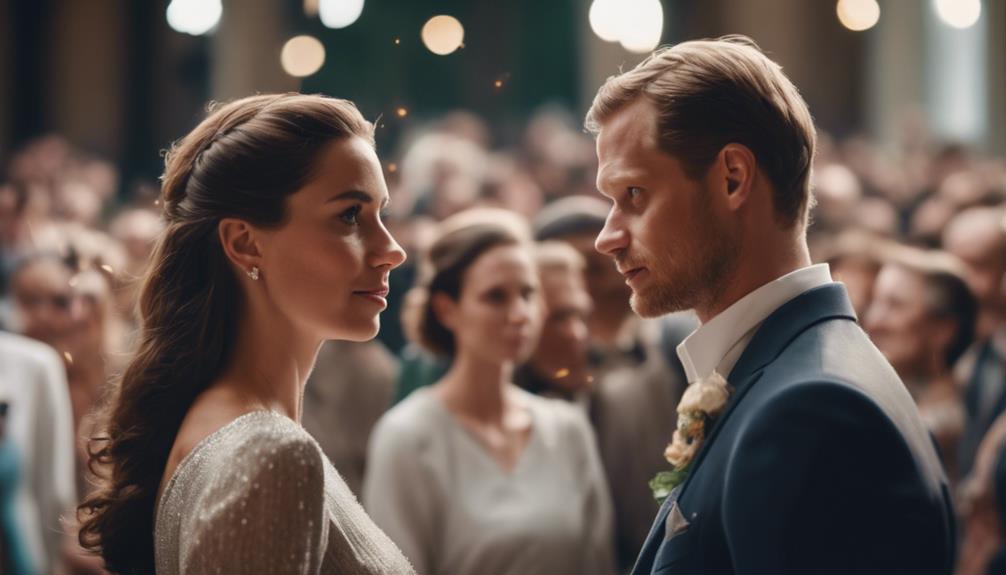
Very few public displays of affection are permitted among royals, in line with Queen Elizabeth's preference for minimal touching. While Prince Harry and Meghan have been more open with their affection in public, even sharing a kiss on the steps of St. George's Chapel after their Royal Wedding, the general expectation within the royal family is to maintain a level of professionalism and decorum.
Queen Elizabeth II, along with Prince Philip, has set the standard for limited touching in public, emphasizing a reserved demeanor during official engagements.
The level of PDA allowed can vary depending on the formality of the event. In more casual settings, such as charity visits or community engagements, royals may engage in hand-holding or light displays of affection. However, the overarching guideline remains to uphold a dignified and restrained presence, avoiding overt displays of affection that could be deemed inappropriate for their positions.
Autograph and Selfie Ban

Maintaining a sense of security and image integrity, the royal family strictly prohibits giving autographs and taking selfies with the public. This autograph ban serves as a security measure to prevent the risk of forgery and exploitation of royal signatures.
Similarly, the selfie ban is in place to deter unauthorized use of images of the royal family, ensuring their public image remains controlled and respectful. While fans may yearn for a personal memento or a quick snapshot with their favorite royal, these rules are vital in upholding the family's prestigious reputation.
Even prominent figures like Queen Elizabeth II adhere to these regulations, refraining from indulging in the popular trend of taking selfies with admirers. By enforcing these protocols, the royal family establishes boundaries that safeguard their privacy and mitigate the potential misuse of their likeness in the public domain.
Specific Order of Entry
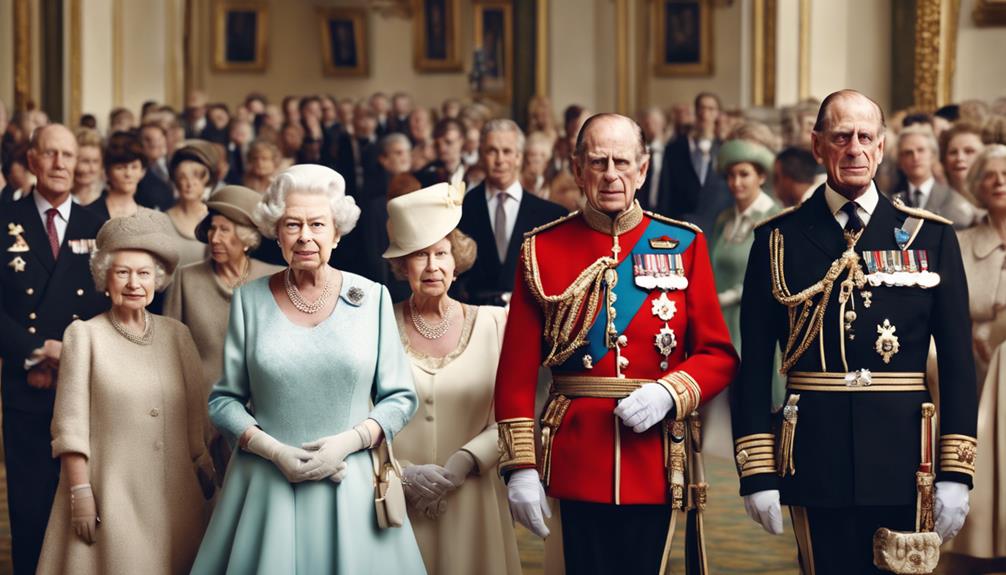
In the royal family, the specific order of entry into a room is determined by the line of succession. This protocol dictates that senior royals must enter first, followed by junior members. The order of entry serves to establish a clear hierarchy and maintain respect within the royal family.
It's a vital aspect of royal etiquette, with the reigning monarch always entering last to signify their status as the highest-ranking royal. Failure to adhere to this correct order of entry can result in embarrassment and protocol breaches, as it's seen as a sign of disrespect towards the established traditions.
The strict adherence to this rule guarantees that everyone knows their place within the royal family and acknowledges the importance of seniority and rank. By following this protocol, the royal family maintains a sense of order and tradition, emphasizing the significance of lineage and hierarchy in their interactions and public appearances.
Gift Acceptance Record
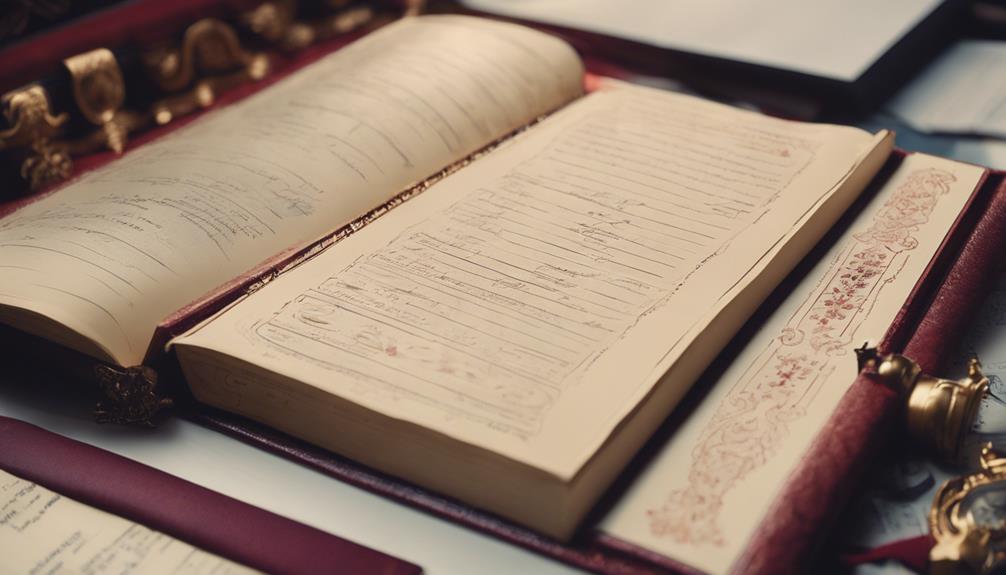
The acceptance of gifts by the royal family is a longstanding tradition that involves intricate protocols and procedures.
The meticulous record-keeping of received gifts guarantees transparency and accountability within the royal household.
This practice not only upholds diplomatic relations but also serves as a historical and legal documentation of the gifts exchanged.
Royal Gifts Etiquette
Royal gifts etiquette includes maintaining a detailed record of all gifts received by the royal family, noting the giver's name and the occasion.
The royal family is expected to accept all gifts, irrespective of their value or size, as a gesture of respect and appreciation. King Charles III holds the authority to determine which family member retains each gift, ensuring fairness and adherence to protocol.
A meticulous record of received gifts is crucial in upholding transparency and accountability within the royal household. To uphold impartiality, gifts from British commercial enterprises are typically declined to prevent any semblance of endorsement.
The acceptance of gifts plays a pivotal role in royal etiquette, showcasing the family's gratitude and adherence to established protocols.
- Gifts are accepted regardless of value or size.
- King Charles III decides the recipient of each gift.
- Detailed records of gifts include giver's name and occasion.
- British commercial gifts are usually declined to avoid endorsement.
- Accepting gifts demonstrates respect and gratitude within royal etiquette.
Regifting Protocol Rules
Regifting within the royal family serves as a strategic method to manage the abundance of gifts received. King Charles III, as the head of the royal family, holds the authority to determine who retains each gift in the meticulously maintained royal gift acceptance record. This record not only guarantees transparency but also upholds the proper protocol surrounding gift-giving within the monarchy. The practice of regifting is not uncommon, considering the wide array of gifts the royal family receives, ranging from personal items to valuable artifacts. To illustrate the meticulous nature of gift management, below is a table showcasing the types of gifts received and how they are handled:
| Type of Gift | Recipient | Disposition |
|---|---|---|
| Personal Items | Queen Elizabeth II | Retained |
| Artifacts | Prince William | Regifted |
| Jewelry | Duchess of Cambridge | Retained |
This system not only manages the sheer volume of gifts but also ensures that each item is allocated appropriately according to royal standards.
Dining Etiquette Guidelines
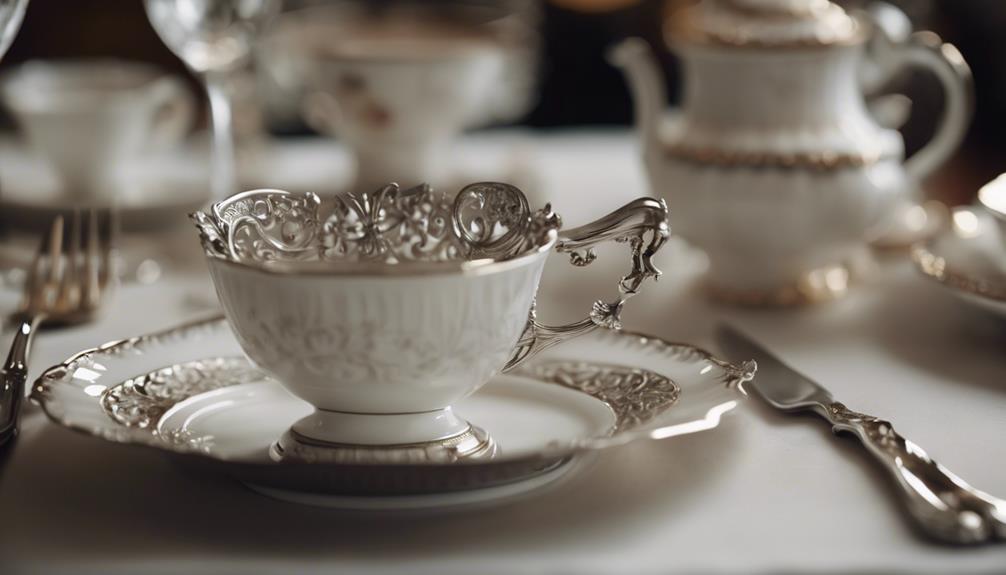
Following specific dining protocols, members of the royal family must adhere to strict etiquette guidelines during meals. Royals are expected to showcase impeccable table manners, with rules such as stopping eating when the Queen finishes her meal and discreetly leaving the table if needed.
The Queen plays a central role in mealtime conversations, initiating discussions first with the person on her right before turning to her left during the second course. Interestingly, the royal family avoids consuming shellfish due to the potential risk of food poisoning, a practice Queen Elizabeth herself follows by rarely indulging in this type of seafood.
Additionally, all members of the royal family are required to mirror the behavior of the monarch when it comes to table manners and etiquette, ensuring a consistent standard of decorum and respect during their meals.
- Royals must stop eating when the Queen finishes her meal.
- The Queen starts conversations at the table, addressing the person on her right first.
- Royals discreetly leave the table for restroom breaks.
- Shellfish is avoided to prevent food poisoning.
- Strict table manners and etiquette are expected from all royal family members.
Frequently Asked Questions
What Are the Weird Secret Rules the Royal Family Has to Follow?
The royal family's secret rules include carrying an all-black outfit for sudden funerals, avoiding two direct heirs flying together, needing monarchs' approval for marriages, banning Monopoly due to competition, and the Queen deciding on gifted items.
What Are the Rules the Royal Family Has to Follow?
When it comes to royal protocols, strict rules govern their conduct. From obtaining approval for marriage proposals to maintaining political neutrality, adhering to dress codes, and limiting public displays of affection, the royal family abides by intricate guidelines.
What Is the Royal Family Not Allowed to Play?
The royal family is not allowed to play Monopoly. It is believed to be too competitive and could lead to family tensions. The Queen herself has reportedly never played the game, contributing to its ban.
What Is the Strange Bath Rule for Royals?
Royals must adhere to a strict bath rule limiting their time to seven minutes. This tradition was established by King George III to promote water conservation. The royal family aims to lead by example in environmental responsibility.
Conclusion
To sum up, the royal family's strict rules may seem excessive to some, but they're rooted in tradition and protocol.
These guidelines serve to maintain the dignity and prestige of the monarchy, ensuring that members conduct themselves in a manner befitting their royal status.
While these regulations may appear rigid, they're essential for upholding the image of the royal family and preserving their historical legacy for future generations.
